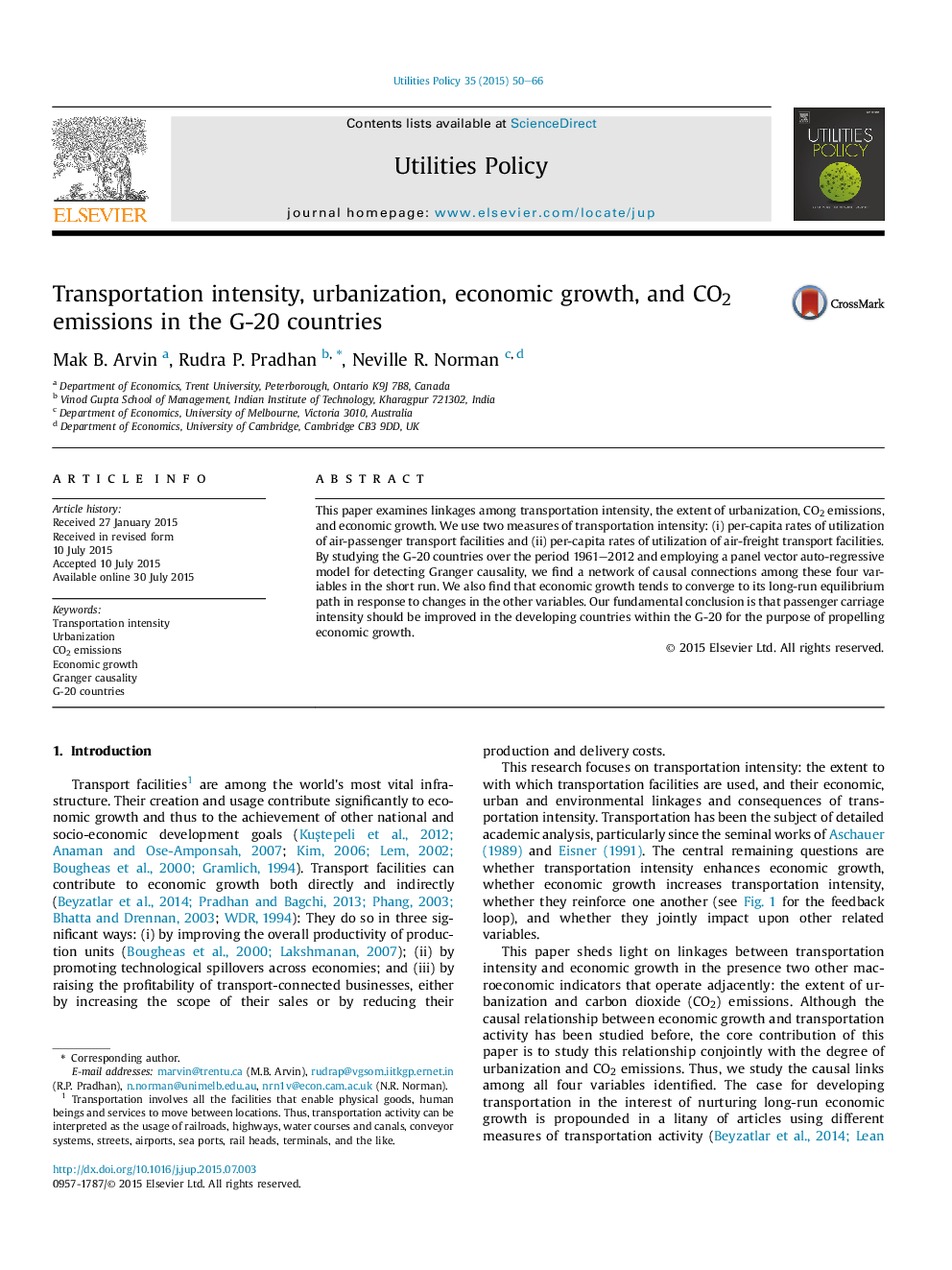| Article ID | Journal | Published Year | Pages | File Type |
|---|---|---|---|---|
| 7411581 | Utilities Policy | 2015 | 17 Pages |
Abstract
This paper examines linkages among transportation intensity, the extent of urbanization, CO2 emissions, and economic growth. We use two measures of transportation intensity: (i) per-capita rates of utilization of air-passenger transport facilities and (ii) per-capita rates of utilization of air-freight transport facilities. By studying the G-20 countries over the period 1961–2012 and employing a panel vector auto-regressive model for detecting Granger causality, we find a network of causal connections among these four variables in the short run. We also find that economic growth tends to converge to its long-run equilibrium path in response to changes in the other variables. Our fundamental conclusion is that passenger carriage intensity should be improved in the developing countries within the G-20 for the purpose of propelling economic growth.
Related Topics
Physical Sciences and Engineering
Energy
Energy (General)
Authors
Mak B. Arvin, Rudra P. Pradhan, Neville R. Norman,
